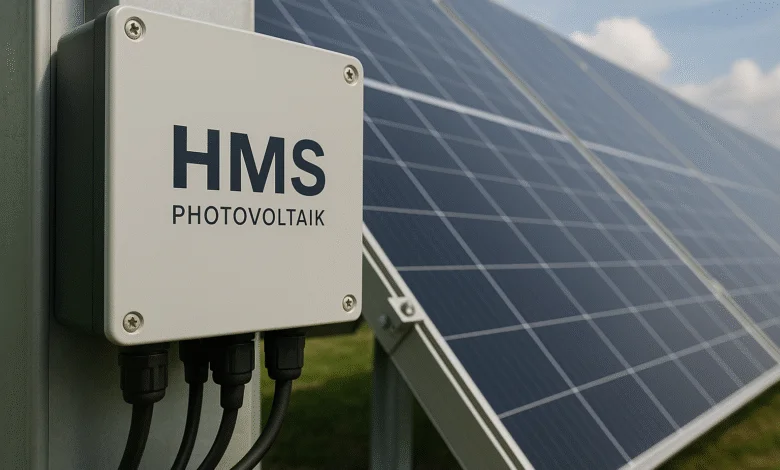As the world shifts towards sustainable solutions, solar energy stands out as a beacon of hope. With its ability to harness the sun’s power, it offers a promising alternative to traditional energy sources. At the heart of this revolution are photovoltaic systems, particularly those developed by HMS Photovoltaik. These innovative systems not only capture sunlight but also convert it into usable electricity efficiently and effectively.
Imagine a future where clean energy is abundant and accessible to everyone—a future powered by cutting-edge technology that maximizes efficiency while minimizing environmental impact. That’s exactly what HMS Photovoltaik aims to achieve through continuous innovation in solar panel technology and design.
Join us as we delve deeper into the evolution of HMS Photovoltaik systems, explore their groundbreaking innovations, and highlight their potential benefits for both consumers and our planet. The journey toward sustainable energy has just begun, and it’s filled with possibilities that can reshape how we think about power generation forever.
The Evolution of HMS Photovoltaik Systems
The journey of HMS Photovoltaik systems began with a vision to harness solar energy efficiently. Initial designs were basic, relying on traditional silicon-based technology. However, as demand for renewable energy grew, so did the ingenuity in photovoltaic solutions.
Advancements in materials have played a significant role. The introduction of thin-film technologies and bifacial panels marked a turning point. These innovations not only enhanced efficiency but also reduced production costs.
HMS has focused on integrating smart technology into their systems. This includes real-time monitoring and advanced grid integration features. Such enhancements make it easier for users to manage their energy consumption effectively.
Furthermore, the design aesthetics of HMS Photovoltaik systems have evolved too. Sleeker profiles ensure that these installations blend seamlessly into various architectural styles while maximizing sunlight absorption.
This evolution reflects an ongoing commitment to sustainable practices and cutting-edge technology within the solar industry.
Innovations in Solar Panel Technology
Recent advancements in solar panel technology have taken energy efficiency to new heights. One exciting innovation is the development of bifacial solar panels. These panels capture sunlight from both sides, maximizing energy production.
Additionally, the integration of perovskite materials has transformed traditional silicon-based cells. This shift allows for thinner, lighter panels that can be produced at a fraction of the cost.
Another significant breakthrough is smart solar technology. With built-in sensors and connectivity features, these systems monitor performance in real time and optimize energy consumption based on usage patterns.
Flexible solar panels are also gaining traction. They can be applied to various surfaces like rooftops or even clothing, offering versatile installation options.
These innovations not only enhance efficiency but also make renewable energy more accessible for everyone as HMS Photovoltaik continues to push boundaries in sustainable power solutions.
Benefits of Using HMS Photovoltaik Systems
HMS Photovoltaik systems offer a wealth of benefits for both residential and commercial users. One significant advantage is their ability to generate clean, renewable energy from sunlight. This reduces dependence on fossil fuels and lowers carbon emissions.
Another key benefit is cost savings. By harnessing solar power, users can significantly reduce their electricity bills. Many governments also provide incentives for adopting such technologies, making them even more financially appealing.
Durability is another strong point. HMS Photovoltaik systems are designed to withstand harsh weather conditions, ensuring long-term performance with minimal maintenance.
Additionally, these systems contribute positively to property values. Homes equipped with solar panels often attract buyers looking for eco-friendly solutions.
The technology behind HMS Photovoltaik continues to evolve, promising even greater efficiency and affordability in the future. This positions them as a smart investment for anyone considering sustainable energy options.
Impact on the Environment and Sustainability
HMS Photovoltaik systems play a crucial role in reducing carbon footprints. By harnessing sunlight, these systems generate clean energy without releasing harmful emissions. This shift to solar power helps mitigate climate change.
Using HMS Photovoltaik technologies promotes sustainability. They provide an alternative to fossil fuels, which are finite and damaging to our planet. As more households and businesses adopt this technology, the demand for cleaner energy increases.
Moreover, solar panels contribute to biodiversity preservation by minimizing land degradation associated with traditional energy sources. The land used for solar farms can coexist with agricultural practices or natural habitats.
Incorporating HMS Photovoltaik into urban planning creates greener cities. Rooftop installations transform unused spaces into productive areas that offset energy consumption while enhancing the overall aesthetics of communities.
This innovation not only empowers individuals but also fosters a collective responsibility towards environmental stewardship.
The Future of Energy: Predictions and Possibilities
The future of energy holds immense potential, driven by innovation and technological advancements. With the rapid development of HMS Photovoltaik systems, we can expect to see increased efficiency in solar energy production.
Emerging technologies like bifacial solar panels are set to revolutionize how sunlight is harnessed. By capturing light from both sides, they maximize output even in suboptimal conditions.
Energy storage solutions are also evolving. Battery technology improvements will ensure that excess power generated during sunny days can be stored for use during cloudy periods or nighttime, creating a more reliable energy source.
Moreover, smart grids will play a vital role in managing decentralized energy production efficiently. This means homeowners with HMS Photovoltaik systems could sell back surplus energy to the grid.
Global collaboration on renewable resources shows promise too. Countries sharing innovations may accelerate our transition toward sustainable practices and reduce dependency on fossil fuels significantly.
Conclusion: Embracing the Power of Innovation for a Sustainable Future
The advancements in HMS Photovoltaik systems signify a pivotal moment for energy consumption and sustainability. As technology continues to evolve, we can expect an even greater push toward renewable resources that align with our environmental goals.
Embracing these innovations not only leads us towards cleaner energy but also empowers individuals and communities to contribute positively to the planet. The integration of smart technologies, improved efficiency, and enhanced storage solutions will redefine how we harness solar power.
As society becomes more conscious of its carbon footprint, the demand for robust solar solutions like HMS Photovoltaik systems will grow exponentially. This shift presents an exciting opportunity for both consumers and businesses alike.
Investing in such technologies today sets the stage for a brighter tomorrow—one where clean energy is accessible to all. By championing this movement, we’re taking crucial steps toward a sustainable future filled with promise and potential.

